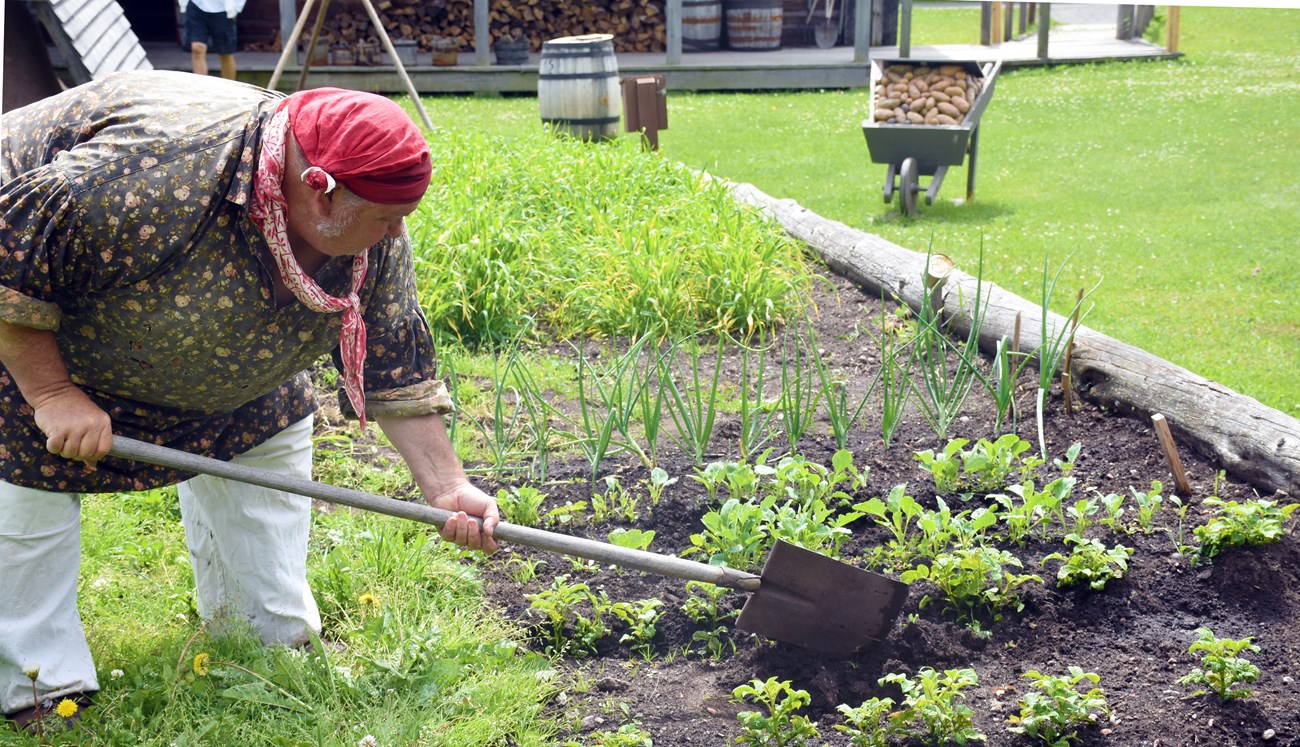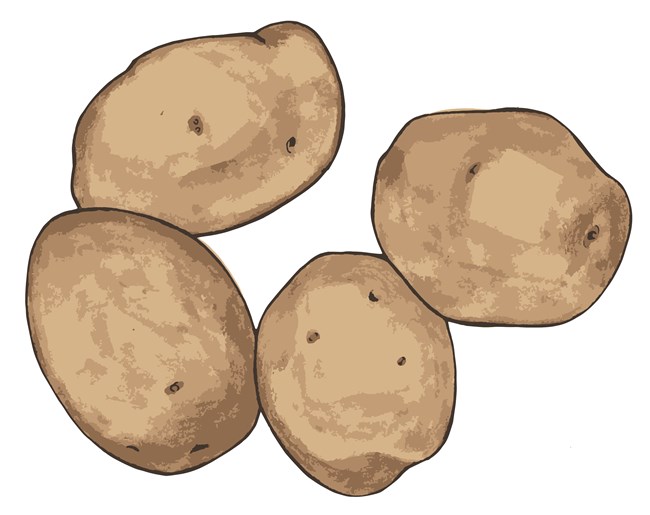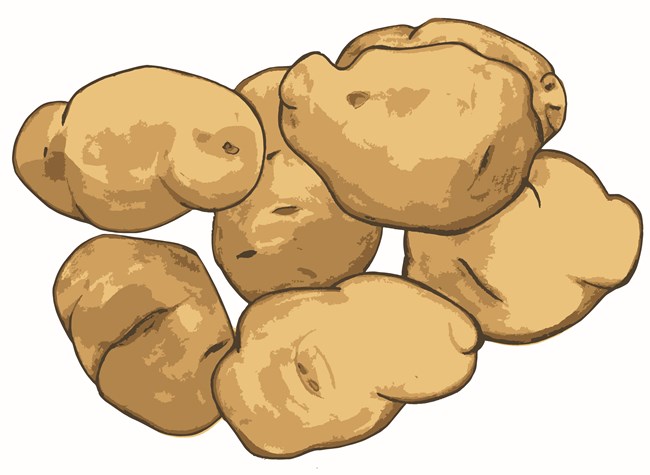Last updated: April 23, 2025
Article
Potatoes to Feed the Fur Trade

NPS Photo / G.M. Spoto
"…as nothing but potatoes have been found to answer the trouble of cultivation."
-Alexander Mackenzie at Grand Portage
Nearly every North West Company post from Grand Portage on Lake Superior to Fort George on the Pacific coast grew potatoes. In 1779, Peter Pond who was among the first NWCo partners, mentioned potatoes growing in the interior of North America. Journals from McLeod, Harmon, Henry, and other Norwesters tell of planting and harvesting bushels.
“For nearly a month we have subsisted on little else than potatoes.”
-Daniel Harmon, Swan River, 1805
The Great Irish Potato Famine of 1845-52 brought potatoes to the public eye. An infectious disease affecting potato crops primarily in the European community led to food shortages. In response to this famine, growers began crossing their usual stock with other varieties to increase disease resistance. Many varieties today are direct results of this episode. New varieties of common white potatoes were engineered in the mid-1800s.
Different potatoes also were introduced from South America, varieties that had escaped the ravages of the European disease. For example, travelers to California brought in the “Bodega Red,” a red-skinned potato which became popular among the Gold Rush in the 1840s and 50s. In 2024, the Grand Portage historic kitchen garden will be growing this variety.
From Fodder to Food
Historically, potatoes were grown for animal fodder followed later by human consumption. Like many nightshade crops, potatoes originated in South America. Many ancient varieties remain today. Although the type grown at fur posts may never be known, this vegetable was vital at Grand Portage. In the Pacific Northwest, the famed potato, Makah Ozette, was introduced to Makah natives from South America by Spaniards as early as the 1790s. In 1818, Indian Agent William Claus noted he grew blue potatoes in Canada, eventually developing a variety called the bluenose, one of the possible sources of the slang term for a Nova Scotian.
The potatoes grown at Grand Portage were likely brought from Montreal, Michilimackinac, or possibly England as seed potatoes. Different from the red or purple and often fingerling shapes of South American potatoes, these varieties were rounder and browner or with a lighter pink skin, both with white flesh. Custead’s Toronto Nursery of 1827, the earliest known Canadian garden catalog, lists "English White" and "some other choice varities" of potatoes with their vegetables. Today, over 9000 varieties of potatoes exist (approximately 1,000 named with heritage data). If you remove South American varietals and focus only on round, white flesh potatoes, the list grows smaller. During the NorthWest Company time frame 1779-1802 at Grand Portage, that number 9,000 shrinks to two: Cups and Lumpers.
Neither of these rare varieties are available today to gardeners in seed form. In 2024, Grand Portage staff located test tube Cups plantlets and will see how well they do in the historic kitchen garden.

NPS Graphic / GM Spoto
Cups
Cups is one of the oldest documented British heirloom potatoes. Dating back to the 1770s, Cups survived the Irish Potato Famine. A small light brown to pink tuber with russet skin, this variety may have been better suited for agriculture than the dinner table.

NPS Graphic / GM Spoto
Lumpers
Farmers in Ireland grew another pre-1800 potato that survived the potato famine. Large and lumpy, with light brown skin and white flesh, Lumpers are recognized as a heavy yielding potato vulnerable to blight. Described as “wet, nasty, old, and knobbly,” and upon boiling “more waxy than floury,” this is another potato better for feeding livestock. At times referred to as “Irish Lumpers,” they even became slang for potatoes as in: “…go eat your lumpers.”
